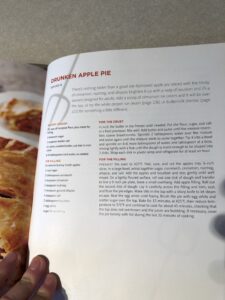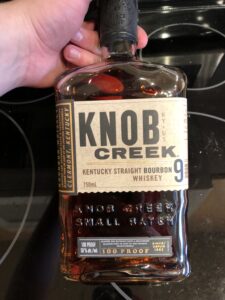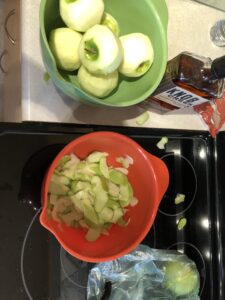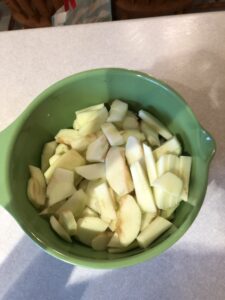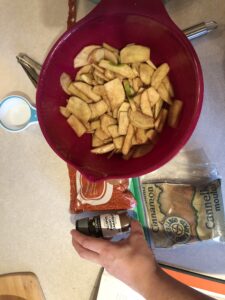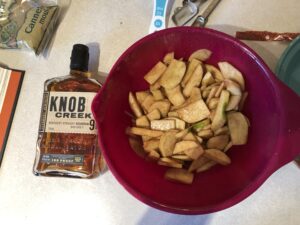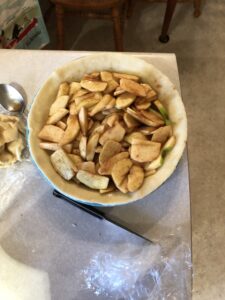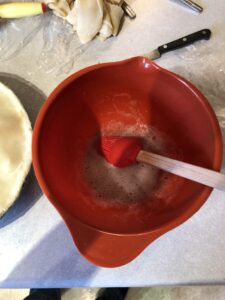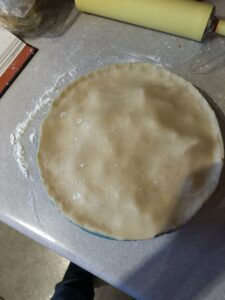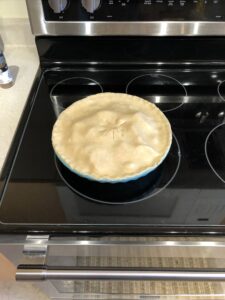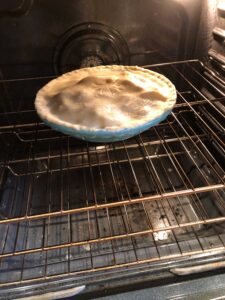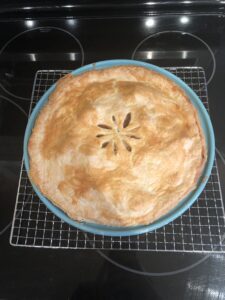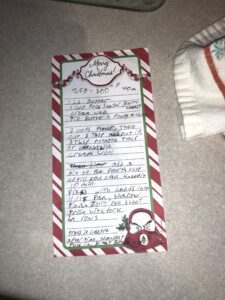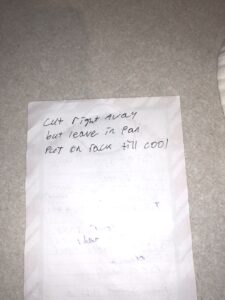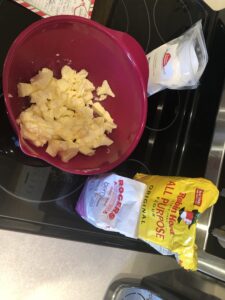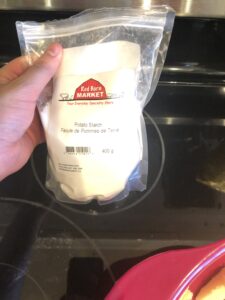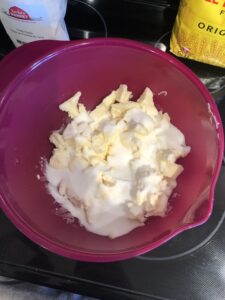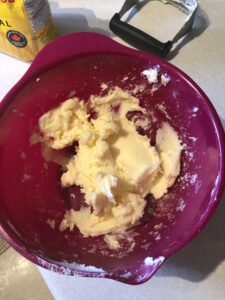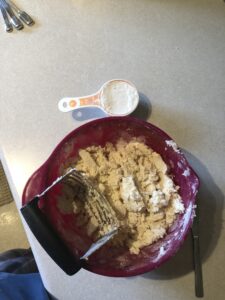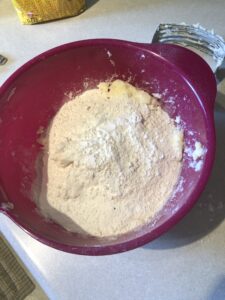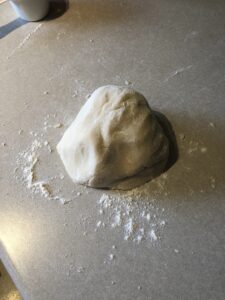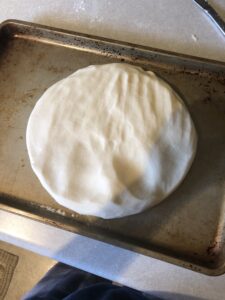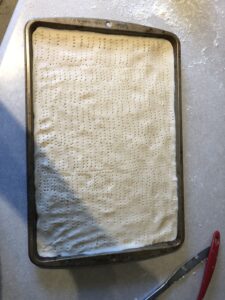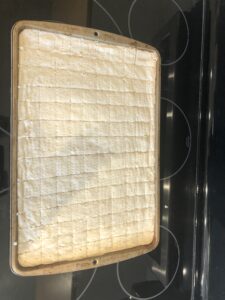Hello!
For week three of my Baking Adventure, I decided to make Drunken Apple Pie!
“oooooo” the crowd says, Well fear not! For I shall tell you how I made it!
As always, to begin I will talk a little about myself and my mental health. I have been a little more anxous this week about school since a lot of things are coming due at the same time, though once again, through baking I have been able to let that all go for a few hours while I make a delicious treat.
I have made a few pies before, but I have never made the crust by hand before, so this was a whole new challenge to me. To start, I laid out all my ingredients on the counter and started with the crust. I first cut two and a half sticks of butter into hald inch squares and placed them into the freezer as per the recepie. I then mixed the flour, sugar and kosher salt together. It was then that I realized that I don’t have a large enough food processor with the right attachments to make the dough, so it was time to break out the pasty cutter and get to work! I then added the butter and began to mix.
After the butter is well mixed in, you beging to slowly add iced water and mix until you are able to shape the the dough into two small disks and then wrap in plastic wrap.
IMG_0284
After I had made the dough and placed it in the fridge, I realized that I did not have a pie dish anywhere in the house, so I went and picked up a ceramic one from Penna & Company at Broadmead Village. When I got home I got to work on making the filling for my pie. I started with peeling and coring my eight granny smith apples, which took a lot longer than I first expected. After this I cut them into slices, and mixed together the spices for the filling. This included sugar, potato starch (I didn’t have any cornstarch so I used this instead), cinnamon, allspice and nutmeg. Put this in a large mixing bowl, added my sliced apples, then poured one oz of my Knob Creek Burbon overtop. I then tossed the apples in the mixture until they were evenly coated. Now, this is where I made my mistake. I had forgotten to take the pastry dough out of the fridge before I started my filling, so it was as hard as a rock. As a result of this, I had to wait for a bout 30 minutes for the dough to warm up enough, and the sugar and alcohol began to break down the apples a bit and draw out a lot of the moisture from them. So instead of having very well coated apples, I had somewhat well coated apples and a bunch of liquid in the bottom of my bowl by the time the dough was rolled out. At any rate, I rolled out my dough into two thin sheets, placed my bottom layer and trimed the excess, added my filling them placed my top layer of pastry and trimmed that. I then sealed the dough with an egg wash and crimped the edge with my finger, put some slits in the top layer to let the steam out, and placed the pie into my oven, pre-heated to 425 degrees. After 15 minutes I reduced the heat to 375 and baked for another 45 minutes. After the time was up I removed my pie from the oven and set it on a rack to cool. After about an hour and a half it was cool enough for me to cut myself a piece. And let me tell you, it was delicious!
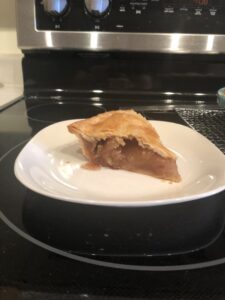
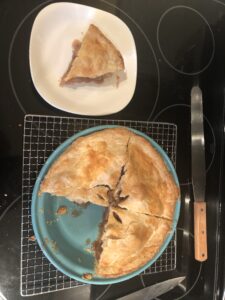
Thank you all for reading anoter entry into my baking adventure, I shall post again next week with another delicious goodie!
